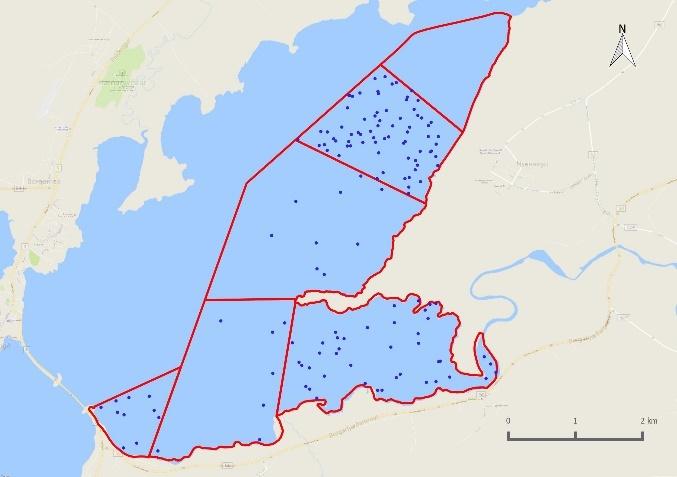
3 minute read
Red-breasted Merganser
(a) Low tide (b) Rising tide
Figure 3-49. Proportion of foraging and roosting Mergus merganser during weekly (a) low tide and (b) rising tide estuarine surveys in six subsites in the Andakíll Ramsar site between 12th March and 25th October 2017.

Red-breasted Merganser
Mergus serrator Toppönd
There were three Red-breasted Mergansers recorded in the first week of March. They were not subsequently present in the estuary until the third week of April, after which their numbers gradually increased throughout May and June. There was a notable increase in July, presumably as birds arrived to moult, and numbers peaked at 320 on 7th August. As no surveys were conducted over a two-week period in late August, the pattern of abundance during this period is unknown. However, with an estimated 2,000-4,000 breeding pairs in Iceland (Skarphéðinsson et al 2006), the site supported an important proportion of the population. There is a sustained decline in numbers from 30th August onwards and most of the birds had emigrated by the end of September. A single Red-breasted Merganser was recorded on the final rising tide survey on 25th October. During low tides the birds favoured the southern portion of the site: Flæðhöfðasker (Est 6), Grjóteyrarklakkur (Est 1) and Kistufjörđur (Est 2), but they were also recorded in Ásgarđshöfđi (Est 4) during rising tide surveys.
Low-tide Rising-tide
Number of individuals 350 300 250 200 150 100 50 0


10 11 12 13 14 15 16 17 18 19 20 21 22 23 24 25 26 27 28 29 30 31 32 33 34 35 36 37 38 39 40 41 42 43 Mar Apr May Jun Jul Aug Sep Oct Week number and month
Figure 3-50. Number of Mergus serrator recorded during weekly low tide and rising tide estuarine surveys in the Andakíll Ramsar site between 12th March and 25th October 2017.
(a) Low tide (b) Rising tide
Figure 3-51. Relative abundance of Mergus serrator during weekly (a) low tide and (b) rising tide estuarine surveys in the Andakíll Ramsar site between 12th March and 25th October 2017. Dots are randomly positioned within each subsite. While each dot refers to a single bird, it refers to the bird’s presence in that subsite only, and not the bird’s actual location.

Figure 3-52. Relative abundance during (a) spring and (b) autumn of Mergus serrator counted on twiceweekly estuarine surveys in the Andakíll Ramsar site in 2017. Spring = 12th March - 7th June; Autumn = 12

(a) Spring (b) Autumn

th June - 25th
October. The number of dots in each subsite refers to the total number of bird-records (from weekly low tide and rising tide surveys) in spring and autumn, adjusted for the length of the season, and reflects the species’ abundance in that season, not the specific location of birds.

(a) Low tide (b) Rising tide

Figure 3-53. Proportion of foraging and roosting Mergus serrator during weekly (a) low tide and (b) rising tide estuarine surveys in six subsites in the Andakíll Ramsar site between 12th March and 25th October

2017.










